Recap "All of Us Are Dead" Episode 3
One of the unwritten rules that govern many apocalypse stories is the commandment “thou shalt not kill.” I was first exposed to this ethos in Stephen King’s The Stand, in which the character Nadine Cross comes to believe that killing anyone, after so many billions of people have died from a superflu, is the worst sin anyone can commit. She winds up eating those words, but they’ve stuck with me ever since, no matter what kind of apocalypse drama I’m watching. It’s a big part of why the kill-or-be-killed ethos of The Walking Dead has always rubbed me the wrong way—and it’s why I found this episode of All of Us Are Dead to be the most impressive one so far.

The episode’s main action, which picks up after both Cheong-san and Su-hyeok survive their cliffhanger endings from the previous ep, centers on Na-yeon, the snobbish girl in the pink sweater, and Gyeong-su, Cheong-san’s comparatively poor best friend. Na-yeon has never been able to stand Gyeong-su, whom she calls a “welfie” (short for “welfare recipient”); when he incurs a scratch during a battle with a zombie that somehow managed to either climb or fall down their escape rope and nearly swing into their new classroom, she demands he be expelled from the group as an infected zombie-to-be.
Most of the group, however, is relatively sure that without actually having been bitten, he should be perfectly fine, and at any rate the infection moves so fast that he already would be showing signs of it. So a compromise is struck: He’ll sequester himself in the school’s adjacent recording studio for a while until the danger has passed. The suggested amount of time is ten minutes, which he peevishly extends to a full hour; Ms. Park and the rest of the group get Na-yeon to promise that if he isn’t a zombie within half an hour, she’ll apologize to him personally.
But Na-yeon can’t bear to see her authority as a rich kid slip away, as it would if she were forced to eat her words and say sorry to the hated welfie. So she does the unthinkable: She sops up some spilled zombie blood with her handkerchief, then rubs it into Gyeong-san’s scratch in the guise of treating it. Within minutes he’s undead, and it falls to Cheong-san, his best friend, to lure him through the window and out to the ground below.
It’s the kind of development that makes you really, really hate a character, which the show knows and takes advantage of. Nam-ra, the school’s sullen president, realizes that she saw what Na-yeon did and accuses her, correctly, of murdering Gyeon-san. As the tide turns against Na-yeon, she cries about having no friends and leaves the room, ready to commit suicide-by-zombie.

But Ms. Park, aghast though she is about Na-yeon’s actions, can’t let this take place. “No matter what happens,” she tells the group, “don’t die, and don’t let anyone die. If you cause someone else to die, living becomes meaningless.” (It’s the antithesis of her colleague Mr. Lee’s nihilistic proclamation, “Everyone will die. Don’t bother having hope.) In the episode’s final moments, Ms. Park runs out to Na-yeon’s rescue, as the lights from a helicopter fill the room where the students remain holed up. And so another episode ends with another cliffhanger designed to keep you rolling from one ep to the next, in the mighty Netflix manner.

Meanwhile, elsewhere in the city, an evacuation notice has been ordered; Cheong-san’s mom tries and fails to reach the school to find her son; the pregnant girl gives birth and sequesters her baby in Cheong-san’s mom’s restaurant before turning into a zombie herself, having first tied her arms to the doors to prevent her from attacking her own infant; chainsmoker Mi-jin and the visiting archers are still stuck in the ladies’ room; the bully in the white dress shirt, who’s by now sacrificed several innocent people to save his own skin, discovers that stabbing the zombies in the neck with a knife seems to kill them, akin to the arrows through the throat from the previous episode; riot cops do battle with a mob of zombies; and On-jo’s EMT father So-ju tends to a minor outbreak in the offices of an assembly member, who thinks enough of her own importance to demand answers as to why helicopters have not come to her rescue. (It doesn’t occur to her that rescuers of any kind are in short supply by this point.)
There’s also some good old-fashioned entrail-eating, if that’s your thing.

After the show’s second episode, my concern was whether the ingeniously staged and shot zombie action sequences would be shored up with fully rounded characters, or at least generously sketched-out ones. After all, so much of the success of Squid Game, the Korean Netflix hit to which All of Us Are Dead is constantly compared, stems from the show’s ability to make you care about a wide range of “contestants” in its sick game, whether to cheer for them, boo them, or both—and yes, eventually, cry for them too. I don’t think anyone will mistake any of Squid Game’s main characters for the cast of, like, The Sopranos anytime soon, but in a tight, effective action-horror story, broad strokes are often good enough.
And I think that’s what we get here. Gyeong-su coming to grips with his own imminent death and trying to spare his friends; Na-yeon’s brittle insistence on being seen as right about everything and her collapse when the façade is pierced; Ms. Park’s humane behavior even after witnessing monstrous cruelty; Nam-ra’s coldness when she reveals Na-yeon’s crime; On-jo’s continued grief over the death of her friend I-sak, a grief Cheong-san can now relate to directly; the plight of the parents; the fate of the pregnant girl, who in her last moments does what she can to save her baby—it’s simple, effective character work across the board. You can throw all the zombies in the world at people, but if you don’t understand them as people, it doesn’t make a difference. All of Us Are Dead is beginning to emphasize the “Us” as well as the “Dead,” and that’s a good sign for the future.

Other Articles
-

Recap "All of Us Are Dead" Episode 6
-
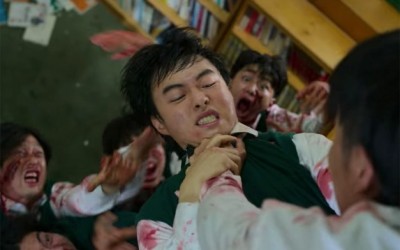
Recap "All of Us Are Dead" Episode 5
-
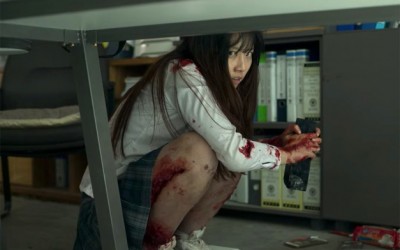
Recap "All of Us Are Dead" Episode 4
-
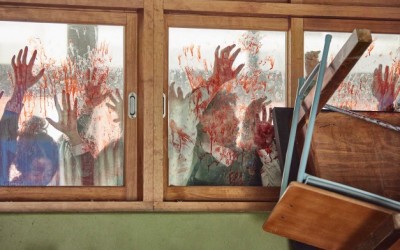
Recap "All of Us Are Dead" Episode 2
-
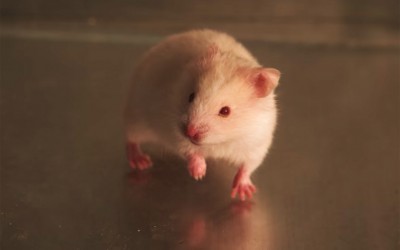
Recap "All of Us Are Dead" Episode 1
-

Recap "Moonshine" Ep 11-12
-
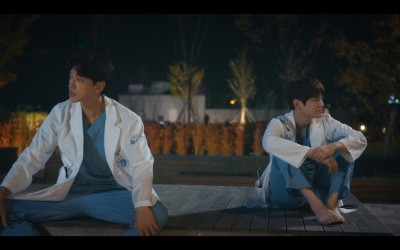
Recap "Ghost Doctor" Ep 7-8
-

Recap "Reset " Ep 15
-

Recap "Reset" Ep 14
-

Recap "Dream Garden" Ep 15
-

Recap "Dream Garden" Ep 14
-

Recap "Mirror: A Tale of Twin Cities" Ep 22
Genres
- Accident
- Action
- Adventure
- Alien
- Amnesia
- Ancient legend
- Animals
- Animation
- Arthouse
- Artificial Intelligence
- Award Winning
- Based on a Comic
- Based on True Story
- Betrayal
- Biography
- BL
- Bodyguard
- Bromance
- Business
- Chambara
- Childhood
- Christmas
- Cohabitation
- Cold Man
- Coma
- Comedy
- Concert
- Conglomerate
- Conspiracy
- Contract Relationship
- Corruption
- Crime
- Criminal
- Curse
- Dance
- Deity
- Demon
- Detective
- Disability
- Disaster
- Documentary
- Drama
- Eastern
- Educational
- Entertainment
- Environment
- Erotica
- Espionage
- Exorcism
- Exploitation
- Fairy
- Family
- Fantasy
- Fashion
- Feminism
- Food
- Foreign
- Friendship
- Game Developer
- Gangster
- Geishas
- Gore
- Goryeo Dynasty
- Grudge
- Gumiho
- Harem
- Hidden Identity
- Historical
- Horror
- Hostage
- Human
- Hypnotism
- Idol Drama
- Indie
- Instructional
- Investigation
- Jidai Geki
- Josei
- Kidnapping
- Kung Fu
- Law
- legal
- Lesbian
- LGBTQ+
- life
- Love Triangle
- Mafia
- Magic
- Manga
- Manhua
- Martial Arts
- Mature
- Medical
- melodrama
- Mermaid
- Military
- Miniseries
- Misunderstanding
- Monster
- Murder
- Music
- Musical
- Mystery
- Mythology
- Nature
- Neighbours
- Noir
- Novel
- Omnibus
- One shot
- Parody
- Phobia
- Poison
- police
- political
- Power Struggle
- Prison
- Professional
- Programmer
- psychiatry
- Psychological
- Reality
- Reality Show
- Reality TV
- Rebellion
- Religion
- Remake
- Republic
- Resurrection
- Revenge
- Rich Man
- Robot
- Romance
- RPG
- Rural
- Samurai
- Scholar
- School
- Sci-fi
- Seinen
- Serial Killer
- Short
- Sismance
- Sitcom
- Slapstick
- Slice of Life
- Society
- Soulmates
- Sports
- Supernatural
- Survival
- Suspense
- Swordsman
- Taiga drama
- Teamwork
- Tearjerker
- Teen
- Terrorist
- Thief
- Thriller
- Time Travel
- Tokusatsu
- Tomboy
- Tragedy
- Tragic Past
- Transmigration
- Trauma
- Treason
- Triad
- Underworld
- Unrequited Love
- urban drama
- Vampire
- Variety
- Variety show
- War
- Warrior
- Web Series
- Webtoon
- Werewolf
- Western
- Witch
- Workplace
- Wuxia
- Yakuza
- Yaoi
- Youth
- Yuri
- Zombie

